Audio Pro WF100 Wireless Transmitter Review
Audio Pro WF100 Wireless Transmitter
Stream audio easily to and from any device. Is it too good to be true?
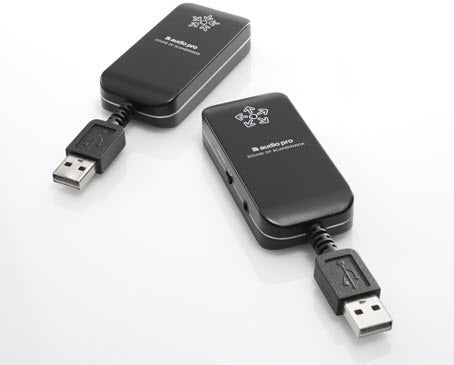
Verdict
Pros
- Easy setup
- Platform neutral
- Lossless audio quality
- Breathes new life into expensive legacy equipment
Cons
- Fairly expensive
- Supplied audio cables are short
- Airplay/Kleer easier for new systems
Key Specifications
- Review Price: £150.00
- Wireless audio streaming
- Platform independent
- Lossless audio transmission
- 3.5mm jack and USB connections
Wires, we hate them. Not only are they visibly unappealing they are physically restrictive. Most manufacturers recognise the demand for wireless equipment and yet in the audio sector the lack of a common standard has held back what in 2011 should be basic functionality. Audio Pro doesn’t have a solution to this problem, but it does offer an extremely elegant work around.
The ‘WF100’ is a wireless, lossless streaming solution which can stream audio from almost any source to any output. It works using a simple dongle system. The ‘TX100’ transmitter dongle plugs into the USB port of a source and the ‘RX100’ receiver USB dongle plugs into the destination.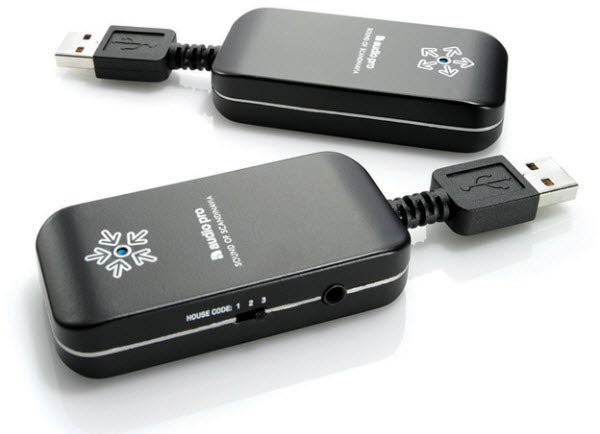
Should USB ports not be available at either end (likely at the destination) then each dongle can be powered from a wall socket and they both feature 3.5mm audio jacks to connect to devices via a simple stereo cable or RCA Y-adaptor. Audio Pro supplies two 3.5mm cables and a Y-adaptor as well as one AC adaptor to power one of the dongles. This should be enough for most setups, but an additional AC adaptor can be purchased separately (it works with any AC adaptor) and third party cables can used with each dongle’s 3.5mm jack.
The WF100 is PC and Mac compatible, the whole solution is driverless and pairing between the dongles is automatic making for a vast array of potential streaming combinations (some of which are visible here – PDF link). Audio Pro also has another trick up its sleeve: each dongle can transmit in three different network frequencies, which it calls ‘housecodes’. These can be adjusted on the dongles by simply sliding a switch between positions 1, 2 and 3. What this opens up is the ability to have either multiple WF100 streaming setups which don’t interfere with one another or a single TX100 transmitter streaming audio to either multiple outputs on the same housecode ”or” being able to change where it streams from a simple flick of the switch. Additional TX100 and RX100 dongles cost £85 each.
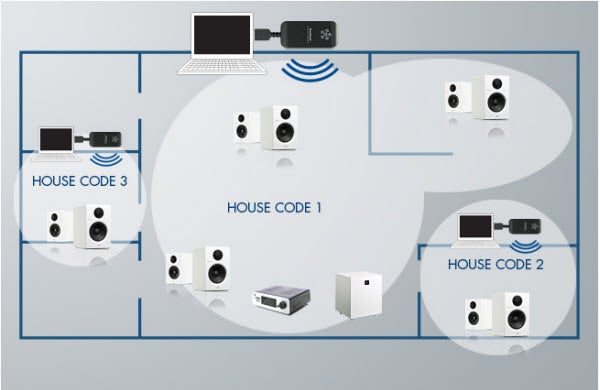
This is all very clever in theory, so how does it work in practice? The good news is flawlessly.
Streaming audio from a Windows PC or Mac is just a case of plugging in the TX100, selecting the ‘USB Headset’ audio source, connecting the RX100 to the AC adaptor and running a 3.5mm cable or Y-adaptor to your output of choice. Music streaming is almost instantaneous (just a 20ms delay) and being lossless it has no detrimental effect on audio quality. Meanwhile range is no better and no worse than WiFi (which is all you can ask for).
Things get a little more complicated if you want to stream from an MP3 player or smartphone since the TX100 will need to be powered separately meaning you’ll most likely need an AC adaptor at both ends. In addition your mobile device will be tethered by a 3.5mm cable, but it is useful if – for example – you want to keep your phone accessible on a desk rather than plugged directly into a dock or HiFi system.
Above this arguably the biggest benefit of the WF100 is it is platform neutral. Unlike Apple’s AirPlay, which is limited to streaming from iTunes, or the various Kleer solutions which tend to be tied to individual docks (as seen with the Arcam rCube) the WF100 can play any media from any programme or any device (albeit some more simply than others). Consequently music is not your only option, your PC or laptop can also get a healthy audio boost if you were to play video from any media player.
So the WF100 is an unqualified success? Yes and no. You see for what it does the setup is essentially flawless, but in what it ”is” there are inherent problems compared to its rivals. Notably streaming by AirPlay may be limited, but if you are happy to stick within its boundaries it is a more straightforward solution – particularly when paired with Airplay compliant devices like the Zeppelin Air which removes the need for dongles altogether – music goes straight from your phone or laptop to the device.
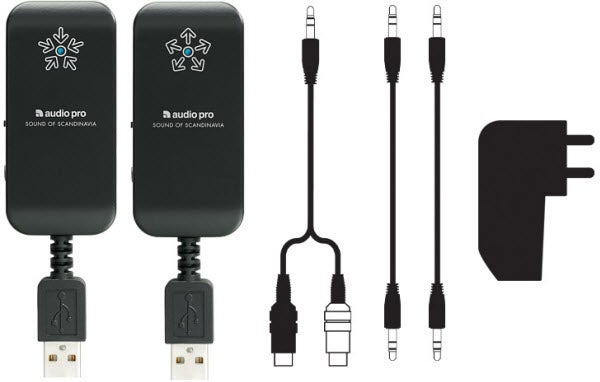
Furthermore at £150 the WF100 is no impulse purchase and it adds cost to any home setup you may consider buying. You should also factor in buying some longer 3.5mm and RCA cables since the ones supplied by Audio Pro are just 1m long making them virtually useless for any output not positioned right beside a wall socket.
Consequently for those looking to buy a new audio setup it would be easier to build it around an integrated standard such as AirPlay or Kleer. Then again where the WF100 really shines is in making the equipment you already own wireless capable and in that regard £150 is a small price to pay for adding such useful new functionality. Furthermore the clever housecode system brings the flexibility to make your setup as complex or basic as you like. 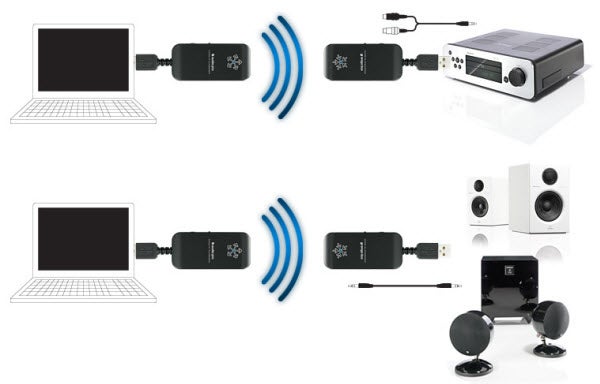
”’Verdict”’
The WF100 wireless streaming system works beautifully. Setup is a breeze and its lossless streaming means audiophiles and even movie buffs will be satisfied. Its platform neutrality and its flexibility to stream from virtually any device to almost any output will be a dream for those with expensive legacy equipment. Then again for those looking to start from scratch it may be more sensible to build your setup around an integrated standard such as AirPlay or Kleer.
The WF100 may not solve the ongoing issue of fragmentation in the audio streaming sector, but it is a neat, elegant and diverse workaround.
Trusted Score
Score in detail
-
Value 7
-
Features 9
-
Usability 10

